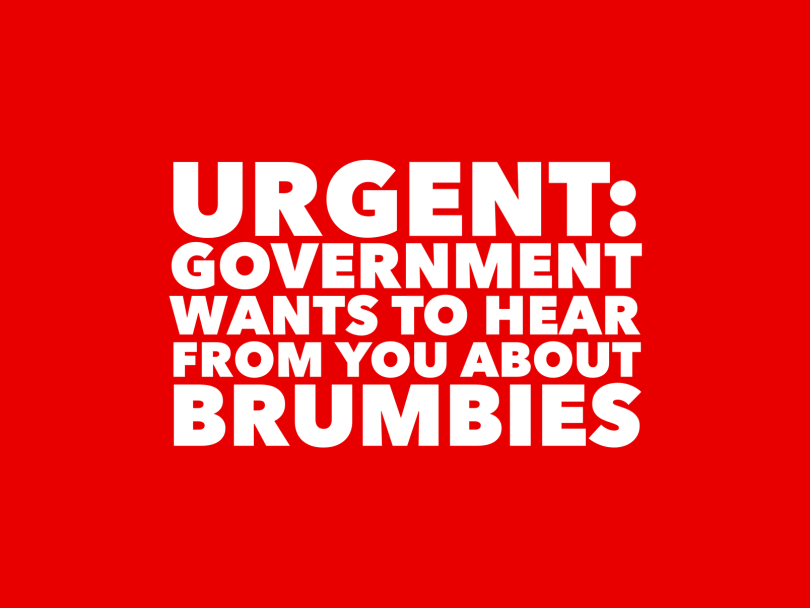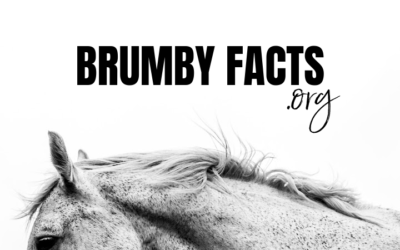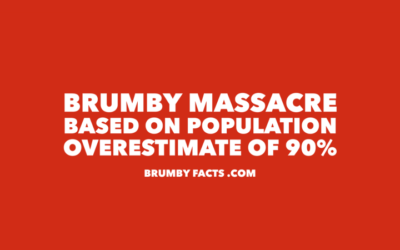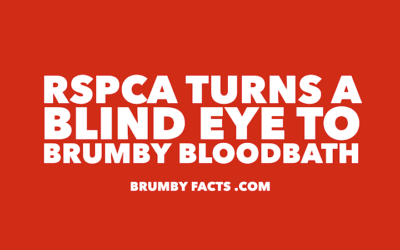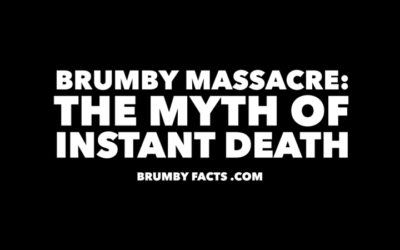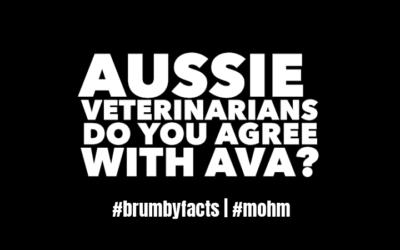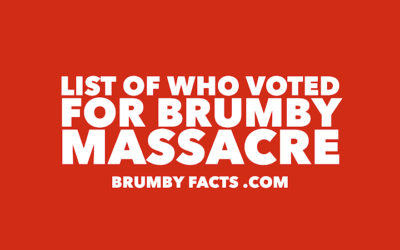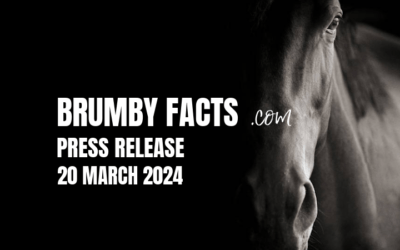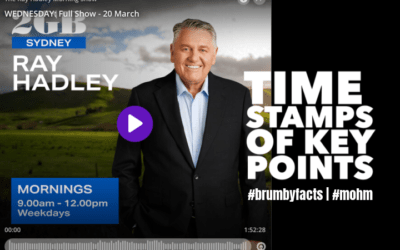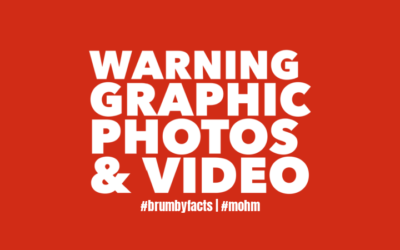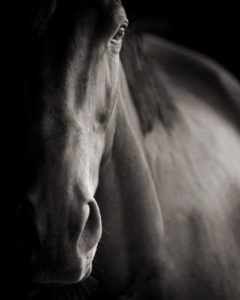YOU CAN HELP STOP A PROPOSED AERIAL SHOOTING OF BRUMBIES IN KOSCIUSZKO NATIONAL PARK
Currently, misinformation about Brumbies in the KNP is running rampant. There is also misinformation about damage and the threat to wildlife.
We recently wrote about inaccuracies in reporting of Brumby numbers and how governments are ignoring science when it comes to the cruel, inhumane culling of Brumbies both from the ground and from the air. You can read more here about how science is being ignored – and about recent massacres of Brumbies here.

YOUR TURN TO HAVE A SAY…
OCTOBER 13, 2023 DEADLINE
FOR IMMEDIATE RELEASE 29 August 2023
An Upper House inquiry has been established to inquire into the proposed aerial shooting of brumbies in Kosciuszko National Park and surrounding areas.
The Hon Emma Hurst MLC, Chair of the Animal Welfare Committee, said: ‘This inquiry will examine the justification for proposed aerial shooting of brumbies in Kosciuszko National Park, giving consideration to urgency, and the accuracy of the estimated brumby population, including the methodology used to determine this estimate.’
The Chair continued: ‘In particular, the committee will investigate the animal welfare concerns associated with aerial shooting and the human safety concerns if Kosciuszko National Park is to remain open during operations.’
‘In addition, the committee will consider the impact of previous aerial shooting operations in New South Wales and the availability of alternatives to aerial shooting,’ the Chair added.
The committee welcomes submissions from interested individuals and stakeholders, including community groups, government bodies and members of the community. The closing date for submissions is 13 October 2023, with committee activity to follow later in the year.
TERMS OF REFERENCE
That the Animal Welfare Committee inquire into and report on the proposed aerial shooting of brumbies in Kosciuszko National Park and surrounding areas, and in particular:
(a) the methodology used to survey and estimate the brumby population in Kosciuszko National Park
(b) the justification for proposed aerial shooting, giving consideration to urgency and the accuracy of the estimated brumby population in Kosciuszko National Park
(c) the status of, and threats to, endangered species in Kosciuszko National Park
(d) the history and adequacy of New South Wales laws, policies and programs for the control of wild horse populations, including but not limited to the adequacy of the ‘Aerial shooting of feral horses (HOR002) Standard Operating Procedure’
(e) the animal welfare concerns associated with aerial shooting
(f) the human safety concerns if Kosciuszko National Park is to remain open during operations
(g) the impact of previous aerial shooting operations (such as Guy Fawkes National Park) in New South Wales
(h) the availability of alternatives to aerial shooting
(i) any other related matters.
(The terms of reference for the inquiry were self-referred by the committee on 28 August 2023.)
RECENT SUBMISSION
AUTHOR’S NAME HELD BACK BY REQUEST
Animal Welfare Concerns Regarding the Current Management of the Brumbies in Kosciuszko National Park.
These include the following:
- Aerial shooting
- Ground shooting
- Passive trapping.
Other concerns include:
- The use of flawed counting methods
- Wrongly attributing the demise of endangered native plants and animals to justify lethal management of the brumbies
- The failure to humanely manage other introduced species
- Environmental concerns over failure to correctly dispose of carcasses.
Aerial Shooting
Aerial shooting has been proposed as a management tool by Environment Minister Penny Sharpe, National Parks and Wildlife Service Management and members of the Invasive Species Council, purporting it to be humane. It can neither be considered humane nor acceptable in the area that they propose to use it as the following articles show:
NB: I have added the below links to remind the committee of the shocking cruelty exhibited in what became known as the 2000 Guy Fawkes Massacre where 240+ of the 600 horses destroyed were left to die in agony over hours, days and sometimes weeks; left to drag themselves about with shattered limbs, broken backs, gut shots, broken jaws and mouths shot off so they could not eat.
Faced with incontrovertible evidence of this cruel slaughter that shocked and horrified the public, the Environment Minister of the time, Bob Debus declared that aerial shooting must never again be used in NSW to control Brumby numbers.
Observation records have shown that at least three bullets were required for each horse, yet more than a third of them died cruel, lingering deaths. That is either atrocious marksmanship or the process is inherently flawed, completely inhumane and should not even be contemplated for use as a management tool.
Horses only have a small area where a shot will kill them. To shoot accurately a fast-moving target from a moving platform with the kinds of difficulties presented by forested, mountainous land requires a precision that is impossible to achieve under the conditions and which obviously the shooters do not have.
The Standard Operating Procedure (see link below) for aerial shooting of horses and large animals states the conditions under which the operation can be considered humane and those under which it is considered inhumane and not to be used. The vegetation and terrain of the Australian Alps fall into the latter category. I quote from the SOP (link below):
‘Aerial shooting should not be done if the nature of the terrain reduces accuracy resulting in too many wounding shots and prevents the humane and prompt despatch of wounded animals.
•Shooting must be done in a manner that maximises its effect, thus causing rapid death. This requires the use of appropriate shot placements, appropriate firearms and ammunition as described below.
•Only head (brain) or chest (heart/lung) shots must be used. Shooting at other parts of the body is unacceptable.’
https://pestsmart.org.au/wp-content/uploads/sites/3/2021/03/HOR001-SOP.pdf
Evidence collected from aerial culls has shown that these conditions have not been followed and that the manner of shooting is, in the words of the document, unacceptable. As mentioned earlier, the horse has only a very small area in which a shot will result in a humane death as shown in the link below. Chest shots, if not accurate to a small area behind the elbow will result in the horse bleeding out in a slow and painful death.
This method cannot in any way be acceptable as a management tool in the conditions prevailing in the Australian Alps. Therefore, it cannot possibly be considered ‘best practice’.
Other welfare Concerns:
The fear and stress induced by being chased and shot at from a helicopter is horrendous, unimaginable and completely unacceptable as a management tool, causing:
- Mares to abort as they lay injured and/or dying; allowing predators to attack and brutally maul the helpless foal;
- Extreme distress at seeing their family members fall around them and thrash about;
- Foals to be separated from their mothers and left to die of starvation.
Ground shooting of the Kiandra Greys.
The Kiandra Greys were, arguably, the best-known iconic Heritage Brumby family of the Kosciusko National Park and were shot in September 2022.
They had a Facebook, Instagram and Twitter following of hundreds of thousands of people across the globe – people who are still grieving their deaths.
They represent our Heritage icons that were showcased to the world in our 2000 Olympics. Many of us were, and still are, greatly distressed by their loss.
Most of these horses were not shot cleanly but were left to bleed out slowly; to die painful, lingering deaths.
One horse was found several kilometres away, having run until it died from blood loss.
A dying mare was left to abort a foal which then had its nose chewed off by foxes/wild dogs while still alive.
This is unconscionable and a long way from ‘best practice’.
It should be noted that these horses were shot against protocol in a wild horse retention zone.
Ground shooting of 67 Brumbies on Snowy Plain
I am disgusted by the killing of 67 brumbies on the Snowy Plain near Davies hut in the Kosciusko National Park in May 2023. As with the Kiandra Greys, there were several gut-shot, shoulder-shot and neck shot, left to die painful, lingering deaths. Against the SOP directives, there were foals at foot also killed the same way. This is un-Australian and an indictment on our government. It is also very far from the ideals of compassionate conservation being adopted around the world.
Environmental Concerns.
Environmentally, there is the issue of dead bodies left in the waterways and around 30 tonnes decaying flesh in one area, not to mention the population explosions in pigs and carnivorous predators, or the feelings of visitors and hikers faced with masses of stinking remains rotting in the park.
The ‘horse head incident’ that so horrified NPWS was not the action of a pro-brumby fanatic but a person outraged by the resulting environmental pollution. If NPWS can be so horrified by a horse head, why are they not upset by the 67 others they failed to dispose of according to government directives?
I have included ground shooting to show that even this method has not been used humanely, according to the SOP. If these so-called marksmen cannot shoot cleanly and humanely from the ground, how are they going to manage it from a moving platform?
Flawed Methodology Used to Survey the Brumby Population
NSW National Parks and Wildlife Service appear to be intent on destroying the descendants of our Waler horses bred for WWI, using over-inflated figures obtained by flawed science as an excuse for aerial shooting in Kosciuszko National Park.
Lack of Transparency
The NSW NPWS 2022 survey was difficult to access: After phoning both the offices of Tanya Plibersek and Penny Sharpe without success, I called the Environment Office twice before I was connected and given an email address which yielded the links below:
Misleading References
There were 1570 references on the page for their sampling technique (Line Transect Sampling with distance software), so I trawled through them. They ranged from surveying elephant droppings to Minke whales but there was only one reference to horses – which they had done themselves! My points being that:
- This smacks of an allegedly wilful and deliberate attempt to mislead the public; and
- NSWNPWS seem to be the only government body in the world to have attempted to justify the use of this flawed and inaccurate model for estimating horse populations.
Line Transect Sampling Assumptions
The methodology of Line Transect Sampling is invalid for estimating horse populations because it assumes:
- Random distribution;
- Animals are detected at their initial location;
- That they can’t move fast enough to be counted on other transects or the same transect twice.
None of this is true for horses which are nomadic; move in family groups; avoid rocky ground and areas of unpalatable feed; are selective grazers and can travel fast enough to be counted several times on the same and different transects. This results in grossly over-inflated numbers which NPWS refuses to acknowledge and needs to be held accountable for.
According to NPWS the Cairns count has a ‘95% confidence range’ of 14,501 – 23,535 which is very wide. According to forensic accounting standards the wider the confidence range the less accurate are the figures.
The 2022 Survey flew adjacent transects in the smaller blocks 24 hours apart (p5) for greater accuracy.
(I had to read this 3 times before I could believe what I was seeing!)
How could this possibly be achieved given the distances horses can cover during such an interval?
Helicopters are normally used to make animals move.
What makes NPWS think KNP brumbies will be any different and stand to be counted?
More particularly, stay in the same spot for 24 hours?
Experts Find Flaws in Brumby Count
Both the British Equine Scientist Joanne Canning and Australian Biostatistician Claire Galea, who was an expert witness in the 2021 NSW Kangaroo Inquiry, have pointed out the flaws in the Cairns count and have recommended an independent recount using more accurate methodology such as drone technology.
Threats to Endangered Species Erroneously Blamed on Brumbies.
The Corroboree Frog is threatened by Chytridiomycosis caused by the amphibian Chytrid fungus which has wiped out susceptible species all over the world.
The Corroboree Frog is also threatened by feral pigs who destroy their environment and eat their eggs.
I quote from the above document:
‘Feral pigs have relatively high protein requirements and will eat the eggs of ground-nesting birds, reptiles and amphibians and directly prey upon lambs, frogs and marine and freshwater turtles2,3.’
‘Favourable conditions allow feral pigs to reproduce all year round and at a rapid rate, akin to rabbits. Sows can breed once they reach about 25 kg or six months of age and can potentially produce two litters of 4–10 piglets in a year.’
The Stocky Galaxias fish is not threatened by the brumbies but by a virus carried by introduced trout.
https://invasives.org.au/blog/trout-are-putting-australias-little-fish-at-risk-of- extinction/
The Broad-toothed Rat is not harmed by horses. In fact, their nomadic, mosaic-style grazing patterns ensure areas of long grass essential for the survival of these small animals. It is feral pigs, cats and foxes that threaten this at-risk species.
The Mountain Pygmy Possum habitat is not in an area frequented by the brumbies. This native species is threatened by climate change; the diminishing availability of a major food source: the Bogong moth; and preyed upon by feral cats and foxes.
Humane Alternatives to Aerial Shooting
Methods include:
- Trapping the horses and handling them enough to safely remove them from the Park for rehoming.
- Trapping as above and removing the horses to an alternative sanctuary or reserve.
- The use of chemical contraceptives such as PZP which can be administered via darting. This is reported to be working successfully with the American Wild Horses – much better in the wild than in scientific trials.
In Australia, Dr Andrea Harvey has been conducting research into this method and assessing Brumby welfare:
https://horsesandpeople.com.au/research-into-the-welfare-of-wild-australian- brumbies/
Increased funding for both trapping and chemical contraception will see much improvement on current results.
These are best practice management tools and the only humane options.
Animal Welfare Issues with Passive Trapping
Passive trapping where gates automatically close have welfare issues because they can separate mares and foals, causing death or stunting of foals; members of family groups; stallions from their herd; disrupting family groups and causing stress and hardship. Horses bond closely to all members in their family group and become extremely distressed by separation.
That horses can suffer emotionally has been scientifically validated by Dr Andrea Harvey et al in 2023. This factor must be taken into consideration because it renders passive trapping unsuitable for use as a management tool.
Horses as Fire Preventers and Preservers of Ecosystems
It is a known fact that the areas grazed by horses and/or cattle were not as seriously affected by the 2020 bushfires as were areas with higher levels of combustible material. This was also true of the deadly 2009 bushfires in Victoria. In the grazed areas the fires moved at walking pace and people were able to escape. In ungrazed areas, the fire was so hot and fast-moving that both people and animals perished. This is a lesson that, sadly, NPWS seem to have failed to learn.
Is Reduction in Numbers Necessary?
With mounting evidence that the brumby number estimates are flawed and over-inflated and that the true count is far less than the 3,000 required by the Wild Horse legislation, there may be no necessity at all to reduce brumby numbers at this point in time. Only a credible recount will tell.
Both a Human and Animal Welfare Issue
As well as the very real human safety issue presented by aerial shooting as described by terrified visitors to the park (15th February 2022), there are many people, including myself, who become distraught over cruelty to animals. We spend hundreds of hours researching; trying to find humane answers to management problems and suffer stress-related issues from witnessing cruelty to animals.
CONCLUSION
There is no doubt that Aerial shooting poses a significant animal welfare issue with the fear and stress of the chase and, historically, more than a third of horses not shot cleanly and left to suffer and die slowly. It cannot, in all conscience, be considered as a management tool.
References
S. C. Cairns 2022 A Survey of the Wild Horse Population in Kosciusko National Park
Joanne Canning 2023 Submission to Senate Inquiry into Impacts and Management of Wild Horses in the Australian Alpine National Park.
C. C. Downer Wild and Free-roaming horses and burros of North America. Factual and sensitive statement – how they help the ecosystem. Natural Horse 2005 7(3) 10-11
Claire Galea 2023 Independent Biostatistical Report on the Brumby Population in the Australian Alpine National Park
Andrea M. Harvey, Ngaio J. Beausoleil, Daniel Ramp, David J Mellor. 2023 Mental Experiences in Wild Animals: Scientifically Validating Measurable Welfare Indicators in Free-roaming Horses.
B. Owusu 2019 An Introduction to Line Transect Sampling and its Applications.
NSW DPI Fact Sheet
Animal Carcass Disposal
https://www.dpi.nsw.gov.au/__data/assets/pdf_file/0003/1299603/animal-carcass-disposal.pdf
THE CULTURAL IMPORTANCE OF BRUMBIES
The wild horses of the Australian Alps are arguably the strongest cultural icons. The enduring legacy of...
The Man from Snowy River, both the iconic Banjo Paterson poem and the 1980s film, but also the Silver Brumby series of novels by Elyne Mitchell, still in print after nearly 70 years, idealise the strength, beauty and spirit of wild mountain horses. At least one source suggests that “the man” from Paterson’s poem was in fact a young Aboriginal rider.
MOHM BRUMBY SPECIFIC WEBSITE
#MOHM HAS A BRUMBY SPECIFIC WEBSITE TOOAs you know we are dedicated to banning the slaughter of horses in Australia for any purpose and that includes wild horses. Please join us on our "sister" website dedicated to banning the slaughter of wild horses AKA Brumbies for...
SPEAK UP FOR BRUMBIES
DEMAND A NON-LETHAL ALTERNATIVE TO BRUMBY MASSACRE Over 500 wild horses, including foals, have been shot from helicopters in Kosciuszko National Park, NSW, Australia in just 2 weeks. And yes, even babies are being massacred from helicopters. DEATHS ARE NOT...
BRUMBY POPULATION COUNTS FLAWED
Over 534 WILD HORSES, including foals, have been shot from helicopters in Kosciuszko National Park, NSW, Australia in just 15 DAYS. And yes, even BABIES are being massacred from helicopters. DEATHS ARE NOT INSTANTANEOUS. That horrific number doesn't include over 300...
RSPCA NEGLECTFUL | COMPLICIT
RSPCA COMPLICIT - IGNORING THEIR OWN PROTOCOLS534 wild horses, including foals, have been shot from helicopters in Kosciuszko National Park, NSW, Australia in just 15 days. And yes, even babies are being massacred from helicopters. DEATHS ARE NOT INSTANTANEOUS. That...
THE MYTH OF INSTANT DEATH
HELICOPTER SHOT NO SILVER BULLET: WHY STOPPING A WILD HORSE TAKES MORE THAN ONE TRYRest assured, there are no graphic images on this page. We always warn visitors about potentially disturbing content, so you can browse safely without any surprises. Horses shot,...
CONTACT YOUR VET
AERIAL SHOOTING OF BRUMBIES HUMANE?MORE HUMANE THAN ROUND UPS?MORE HUMANE THAN NON-LETHAL ALTERNATIVES?The paragraph above is taken from Submission No 121 provided to the "INQUIRY INTO PROPOSED AERIAL SHOOTING OF BRUMBIES IN KOSCIUSKO NATIONAL PARK" DATED 13 OCTOBER...
ACT NOW TO SAVE BRUMBIES
DEMAND A NON-LETHAL ALTERNATIVE TO BRUMBY MASSACRE Over 500 wild horses, including foals, have been shot from helicopters in Kosciuszko National Park, NSW, Australia in just 2 weeks. And yes, even babies are being massacred from helicopters. DEATHS ARE NOT...
BRUMBY FACTS PRESS RELEASE
FOR IMMEDIATE RELEASENSW GOVERNMENT SANCTIONS INHUMANE BRUMBY CULL IN KOSCIUSZKO NATIONAL PARKSydney, NSW – 20 March 2024 – Animal welfare groups are condemning the NSW Government's aerial cull of Brumbies (wild horses) in Kosciuszko National Park (KNP), calling it a...
RAY HADLEY
MORE PRESS DEMANDING INHUMANE SLAUGHTER ENDSRest assured, there are no graphic images on this page. We always warn visitors about potentially disturbing content, so you can browse safely without any surprises. MOST NOTEWORTHY TIMES WITHIN THE...
VIDEO EVIDENCE
HARD TO WATCH BUT EXTREMELY VALUABLEMany of our pages and blog posts state that that they do not contain graphic or potentially disturbing images or videos. THIS BLOG POST HAS DISTURBING and GRAPHIC VIDEOS. BUT the disturbing images of dead Brumbies shot from...
CLAIRE GALEA (VIDEO)
MANDATE STIPULATES 3,000 TO STAY IN THE PARK...Rest assured, there are no graphic images on this page. We always warn visitors about potentially disturbing content, so you can browse safely without any surprises. FEWER THAN 3,000 BEFORE MASSACRE BEGAN...It’s important...
DICK ROBERT’S EVENT
ORGANISED BY DICK ROBERTSKosciuszko National Park's north section faces a 7-month closure (starting April 4th) for an inhumane, barbaric, wild horse cull. Join a peaceful protest Easter Sunday 11 am @ Port Phillip Fire Trail & Long Plain Rd. (Campout welcome!)...
#MOHM NEEDS YOUR HELP!
We’ve been threatened by those in the horse racing industry and those who benefit from horse slaughter more times than we can count.
But we are not going away.
We are going to persist until horse slaughter no longer exists for any purpose within Australia -- and until the horse racing industry makes drastic changes.
We are going to continue our hands-on work to offer lifelong sanctuary to as many horses as possible. We generally have 20 at just one of our locations - at any given time.
We have the acreage to take on more horses as financial support allows.
MOHM BRUMBY SPECIFIC WEBSITE
#MOHM HAS A BRUMBY SPECIFIC WEBSITE TOOAs you know we are dedicated to banning the slaughter of horses in Australia for any purpose and that includes wild horses. Please join us on our "sister" website dedicated to banning the slaughter of wild horses AKA Brumbies for...
BONNY
HOW MOHM GOT STARTEDThis is not only the story of how the founder of Meet Our Horse Meat got started rescuing horses - it's also an example of why we love the power of social media and 'keyboard warriors'.Bonny’s life changed because of one simple comment on social...
SEE FOR YOURSELF
SEE FOR YOURSELF... Undercover investigations in Australia have shown the horrendous animal welfare conditions in the EU-approved Meramist slaughterhouse. We know this 2-minute video is hard to watch but we're hoping that not everyone will turn away.#MOHM NEEDS...

